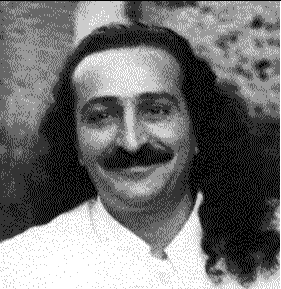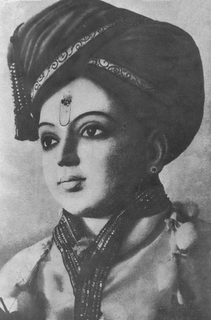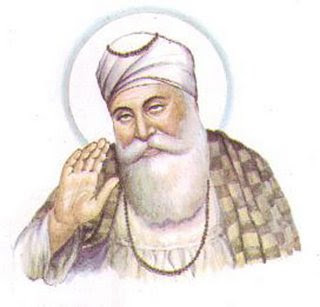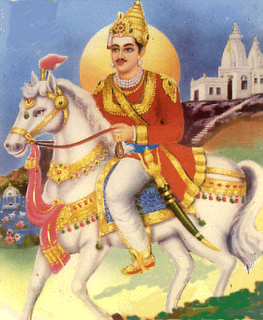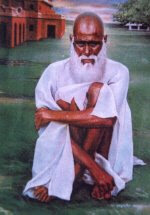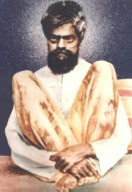Bahinabai was not just a poetess, she was a devout worshipper of Lord Vithoba of Pandharpur. She was born to Audeo Kulkarni and Jankibai in 1628 A.D. at a town named Deogaon, to the west of Verula, a place well known for its carved temples. Her father, Audeo Kulkarni was a Yajurvedi Brahman and village scribe. A childless couple, Bahinabai was born to them after much penance and austerities. After the birth of Bahinabai, they were also blessed with two sons.
When Bahina was five years old, her parents marry her off to a very learned businessman in Shivpur called Ratnakar Pathak, a widower aged thirty. After Bahina’s marriage, her father Audeo due to family feuds fell into debts and was imprisoned. The son-in-law Ratnakar helped to set him free and the whole family set off to Rahimatpur. After staying there for two years they finally decided to settle in Kolhapur, where they got shelter in the verandah of a learned Brahmin named Bahirambhat. But, of all the places they visited, Bahina liked Pandharpur the best. She was fascinated by the idol of Lord Vithoba and thrilled to hear the Abhangas by Tukaram.
Very soon Bahirambhat received the gift of a cow and a calf which, in response to his dream, he offers to Ratnakar. Bahina and Ratnakar. They take great care of the cow. The calf takes a great liking for Bahina and followed her wherever she went. Once it so happened that Jayaram-swami, a well-known Kirtankar performer of kirtans or devotional musical discourses) had come to Kolhapur. Bahina attended the kirtans with her family, and as usual, the calf followed her to the kirtan. Jayaram Swami noticed this and appreciated the bond between the calf and Bahina, but the people around thought that the calf had strayed into the pandal and drove it out. Noticing this, Jayaram Swami called the calf back and patted both the calf and Bahina. Some people around at the time of the incident don’t take kindly to the Swami’s chidings, and complain to Bahina’s husband, Ratnakar, does not approve of the attention shown by Swami on Bahina and beat her severely. The calf unable to bear the ill-treatment meted to Bahina, gives up eating thus giving up her life.
Grief-stricken, Bahina falls unconscious for three days on hearing about the calf’s death. On regaining consciousness, she finds herself surrounded by her family, but Bahina was a changed person. She had experienced enlightenment in her unconscious state and had seen Lord Vithal before her. She had also seen Sant Tukaram. She becomes a devotee of Lord Vithal and spents her time singing Tukaram’s abhangas. On hearing this, Jayaram Swami tells Ratnakar that his wife Bahina was no ordinary woman but a saint and Yoga-brastha (a former yogi under a temporary lapse) and that he was very fortunate in having her as a wife.
The fame of Bahina’s devotional music spread far and wide, but Ratnakar consumed by jealousy, decides to leave her. On hearing this, Bahina was determined to give up her life in case he did leave her. And strangely enough, before leaving the house Ratnakar was taken suddenly ill and was in great agony. Bahina nursed him patiently day and night which made Ratnakar realize his mistakes, more so since he had abused not just another mortal, but a saint. After Ratnakar recovers his health, the whole family shifts to Dehu. In Dehu, they wanted to shift to locality of Mumbaji, but were refused admission because he was against them, being devotees of Tukaram, who was of a low caste. But this time Ratnakar stood by his wife and she came to be respected even more. They were given a place to stay in the temple of Tukaram. Here they regularly listened to Tukaram’s abhangas and kirtans, and Bahinabai thought herself most fortunate because she could hear Tukaram’s Abhangas day and night. Since then Ratnakar also became a devotee of Tukaram.
The couple Bahinabai and Ratnakar lived quite happily in the premises of the temple but Mumbaji could not bear to see their happiness. Once he drags their cow, ties it in his house and thrashes it severely which the people around can’t bear to see, and beat him. However, Bahinabai intervenes in the nick of time and saves Mumbaji, who repents for his wrong doings and becomes a follower of Bahinabai. In Dehu Bahinabai gives birth to a daughter, Kashi and son, Vithoba, who becomes a great poet and kirtankar like her in the future.
One day, in the absence of her husband, Bahinabai goes to pilgrim quarters and meditates continuously for three days. At the end of the meditation, she felt as though Tukaram himself had placed his hand on her head, blessed her and asked her to compose. It was a transcendental event for her. Overjoyed, she went to bathe in the river and as she came out, words flowed from her mouth. With the blessings of Tukoba, she got full inspiration to compose devotional songs. She began composing abhangas on spiritual subjects.
In many of her abhangas she has expressed on how she attained knowledge of Advaita Vedanta. She lived till 72 years. In her verses, her last message to her son gives description of her previous thirteen births and it is said she knew beforehand the time of her death. It is surmised that she had initiated disciples too. Deenakavi, the author of Panchkaran Mahavakya, was one of her disciples. A collection of her abhangas, songs and poems has been published in a book form by Shri Umarkhani. Bahinabai has specifically acknowledged Tukaram as her Guru and that he initiated her has been clearly expressed in all her Abhangas.
http://www.spiritual-note.com/Bahinabaihttp://www.dabase.net/bahinaba.htm Sri Guru Raghavendra Thirtha was born in 1595 AD in southern India to humble parents, who gave him the name of Venkatanatha as an acknowledgement of their devotion to Lord Venkateswara. As a child Venakatanatha grew up at Kumbakonam under the watchful eyes of his guru Sudheendra Thirtha. As a young man he led normal household life, in poverty, served by his dutiful wife Saraswathim, through whom he had a son. But he continued to serve his guru, whom he succeeded as Swami Raghavendra Thirtha to become the head of the Mutt. Unable to bear the news of his renunciation, his wife said to have committed suicide. As the head of the Mutt, Raghavendra Tirtha performed many miracles and helped many people who became his devotees. During his life time he composed many important Vaishanvite works and propagated the Dwaita philosophy. He died at the age of 78 at Mantralayam, originally known as Manchala, near Adoni, in present day Andhra Pradesh, India. Sri Raghavendra continues to bless his devotees from his Samadhi which is now a famous pilgrimage center in Southern India and known as the Mantralayam temple to which rich and poor alike go to pay their homage.
Sri Guru Raghavendra Thirtha was born in 1595 AD in southern India to humble parents, who gave him the name of Venkatanatha as an acknowledgement of their devotion to Lord Venkateswara. As a child Venakatanatha grew up at Kumbakonam under the watchful eyes of his guru Sudheendra Thirtha. As a young man he led normal household life, in poverty, served by his dutiful wife Saraswathim, through whom he had a son. But he continued to serve his guru, whom he succeeded as Swami Raghavendra Thirtha to become the head of the Mutt. Unable to bear the news of his renunciation, his wife said to have committed suicide. As the head of the Mutt, Raghavendra Tirtha performed many miracles and helped many people who became his devotees. During his life time he composed many important Vaishanvite works and propagated the Dwaita philosophy. He died at the age of 78 at Mantralayam, originally known as Manchala, near Adoni, in present day Andhra Pradesh, India. Sri Raghavendra continues to bless his devotees from his Samadhi which is now a famous pilgrimage center in Southern India and known as the Mantralayam temple to which rich and poor alike go to pay their homage.




